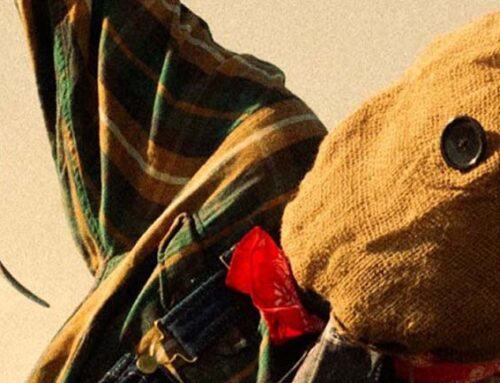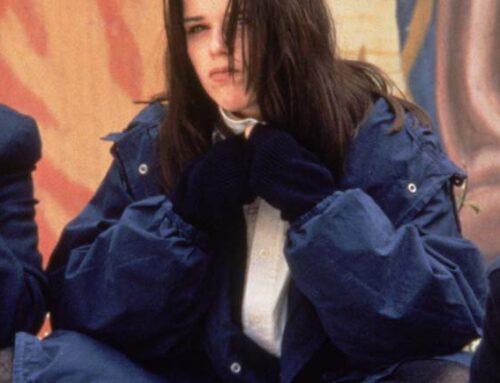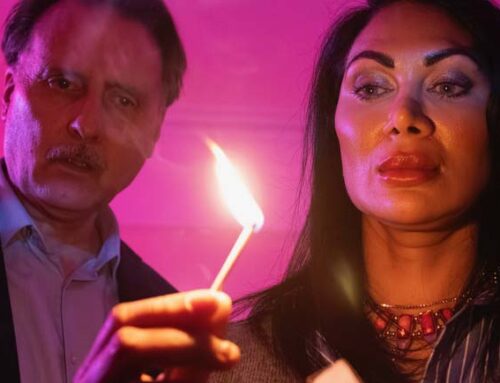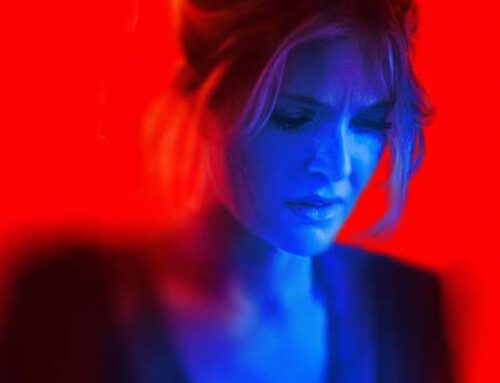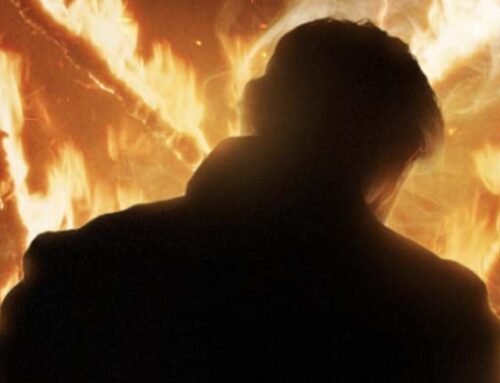Based on Charlotte Perkins Gillman’s classic novella of the same name, The Yellow Wallpaper is an examination of gender roles in the early 19th Century and of societal views on women’s mental faculties. It focuses on a different kind of prison, one that takes a domestic form as Jane (Alexandra Loreth) suffers from an unknown illness as she is on “rest cure” at a rented summer home with her husband John (Joe Mullins). The film (and book) touch on themes of autonomy, identity, and the right to determine what is best for you. Though it is a gorgeous display, The Yellow Wallpaper falls a bit short of the high hopes I had for the film.
I’ll start by saying the coloration of the film is *stunning* with scenes saturated in visually striking colors then soaked in yellow. Drenching everything in a sickly yellow hue beautifully personified Jane’s internal battle with maintaining her sanity. The cinematography was a delightful partner to the coloration. Many of the shots were not straight on or were shot through something (a gate, door, bush, etc.) making things appear distorted and acted as a great representation of Jane’s descent into mental illness/madness.
The Yellow Wallpaper is a difficult story to tell successfully on screen and it shows a bit. The subtle nature of the book creates a lot of potential to underact in the film. The performances occasionally felt a bit stiff and feelings of malaise and melancholy came across more like robotic nonchalance. As the film begins to climax there is more emotion to work with and Alexandra Loreth gives a stellar ending performance. Her manic yet intentional energy was hauntingly beautiful to watch.
Now, allow me to prepare your ears for the soundtrack of The Yellow Wallpaper. It is a cacophony of dissonant sounds which evoked feelings of insanity. There was more than one occasion when I felt like the soundtrack was starting to drive me crazy. Which I am sure was the intent and it was masterfully executed. I am unsure if the sound was as unsettling from beginning to end or if there was a slow build, what I do know is that as time went on, my auditory experience became increasingly more stressful and that made the movie even better. Low ominous repeating tones competed for your attention with high screeching notes making for one anxiety-inducing soundtrack.
I don’t feel that the exact story of The Yellow Wallpaper comes to life in this film adaptation. It is a gorgeous gothic atmospheric piece, but the actual storyline remains relatively thin. Jane’s loosening grip on reality and growing obsession with the woman caught in the wallpaper and her hallucinations of women wandering the grounds might not be as blatantly clear to someone who has not read the book. But those who have not read the book may not take issue with the lack of clear relation. That being said, there are deviations from the book that are purposeful and very much in the film’s favor. I LOVED the ending and the sequence leading up to the ending. It was gripping, engaging, and really brought the film home.
Overall, The Yellow Wallpaper is a beautiful film that offers a wonderful sensory experience. Fans of the novella might find the adaptation a little frustrating however as I mentioned earlier some of the artistic liberties taken enhanced the story. But if you are unbothered by some stiff acting and slow pacing and love the gothic atmosphere, then give this one a try!
5 out of 10
| The Yellow Wallpaper | ||
| RATING: | UR |
The Yellow Wallpaper Teaser - Screen Anarchy Exclusive |
| Runtime: | 1hr. 37 Mins. | |
| Directed By: | ||
| Written By: | Kevin Pontuti (screenplay)
Charlotte Perkins Gillman (story) |
|

